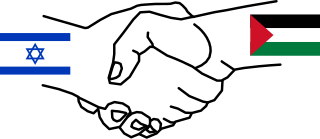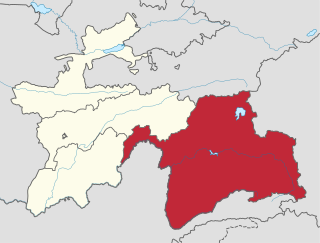Related Research Articles

Tajikistan, officially the Republic of Tajikistan, is a landlocked country in Central Asia. It has an area of 142,326 km2 (54,952 sq mi) and an estimated population of 9,750,065 people. Dushanbe is the country's capital and largest city. It is bordered by Afghanistan to the south, Uzbekistan to the west, Kyrgyzstan to the north, and China to the east. It is separated narrowly from Pakistan by Afghanistan's Wakhan Corridor. Tajiks form the ethnic majority in the country, and the historical Tajik homeland lies in present-day Tajikistan as well as parts of Afghanistan and Uzbekistan.

The economy of Tajikistan is dependent upon agriculture and services. Since independence, Tajikistan has gradually followed the path of transition economy, reforming its economic policies. With foreign revenue precariously dependent upon exports of cotton and aluminium, the economy is highly vulnerable to external shocks. Tajikistan's economy also incorporates a massive black market, primarily focused on the drug trade with Afghanistan. Heroin trafficking in Tajikistan is estimated to be equivalent to 30-50% of national GDP as of 2012.

Dushanbe is the capital and largest city of Tajikistan. As of January 2022, Dushanbe had a population of 1,201,800 and that population was largely Tajik. Until 1929, the city was known in Russian as Dyushambe, and from 1929 to 1961 as Stalinabad, after Joseph Stalin. Dushanbe is located in the Gissar Valley, bounded by the Gissar Range in the north and east and the Babatag, Aktau, Rangontau and Karatau mountains in the south, and has an elevation of 750–930 m. The city is divided into four districts, all named after Persian historical figures: Ismail Samani, Avicenna, Ferdowsi, and Shah Mansur.

The Shanghai Cooperation Organisation (SCO) is a Eurasian political, economic, international security and defence organization established by China and Russia in 2001. It is the world's largest regional organization in terms of geographic scope and population, covering approximately 80% of the area of Eurasia, 40% of the world population. As of 2021, its combined GDP was around 20% of global GDP.

Arab–Israeli peace projects are projects to promote peace and understanding between the Arab League and Israel in different spheres. These are part of a broader attempt at a peace process between Palestinians and Israelis. Sponsors of such projects can be found both in Israel and Palestine.

Bokhtar, previously known as Qurghonteppa or Kurganteppa, is a city in southwestern Tajikistan, which serves as the capital of the Khatlon region. Bokhtar is the largest city in southern Tajikistan, and is located 100 kilometres (62 mi) south of Dushanbe and 150 kilometres (93 mi) north of Kunduz, Afghanistan.

Interfaith dialogue refers to cooperative, constructive, and positive interaction between people of different religious traditions and/or spiritual or humanistic beliefs, at both the individual and institutional levels.

The Tajikistani Civil War, also known as the Tajik Civil War, began in May 1992 and ended in 1997. Regional groups from the Garm and Gorno-Badakhshan regions of Tajikistan rose up against the newly formed government of President Rahmon Nabiyev, which was dominated by people from the Khujand and Kulob regions. The rebel groups were led by a combination of liberal democratic reformers and Islamists, who would later organize under the banner of the United Tajik Opposition. The government was supported by Russian military and border guards.

The Islamic Renaissance Party of Tajikistan, also known as the Islamic Revival Party of Tajikistan, is a banned Islamist political party in Tajikistan. Until 2015, when it was designated a terrorist organisation, it was the only legal Islamist party in Central Asia.

The Fund for Peace is an American non-profit, non-governmental research and educational institution. Founded in 1957, FFP "works to prevent violent conflict and promote sustainable security."
This page examines the dynamics surrounding women in Tajikistan.

The Dartmouth Conference is the longest continuous bilateral dialogue between American and Soviet representatives. The first Dartmouth Conference took place at Dartmouth College in 1961. Subsequent conferences were held through 1990. They were revived in 2014 and continue today. Task forces begun under the auspices of the main conference continued to work after the main conference stopped. The Regional Conflicts Task Force extended the sustained dialogue model, based on the Dartmouth experience, to conflicts in Tajikistan and Nagorno-Karabakh. Dartmouth inspired a number of other dialogues in the former Soviet Union and elsewhere, many of them under the auspices of the Sustained Dialogue Institute and the Kettering Foundation.
Harold Henry Saunders served as the United States Assistant Secretary of State for Intelligence and Research between 1975 and 1978 and United States Assistant Secretary of State for Near East Affairs between 1978 and 1981. Saunders was a key participant in the Camp David Accords, helped negotiate the Iran Hostage Crisis, and developed the sustained dialogue model for resolving conflicts Saunders later launched the Sustained Dialogue Institute, which uses the sustained dialogue model to address racial and other issues in the United States and abroad.

The Gorno-Badakhshan clashes consisted of fighting between Tajik government forces and an armed group led by Tolib Ayyombekov in Tajikistan's semi-autonomous Gorno-Badakhshan province in late July 2012. The Western media described the fighting as the worst in Tajikistan since 2010 or the 1992–1997 civil war.

The insurgency in the Gorno-Badakhshan region in Tajikistan from 2010 to 2015 was an armed conflict between the Tajik Army and Islamist militants, led by numerous leaders from the Tajikistani Civil War. The conflict evolved in 2010 and climaxed in 2012, with the defeat of main rebel forces. Other incidents took place in September 2015, when former deputy defense minister Abduhalim Nazarzoda led an armed uprising, suspected of ties to the Islamic Renaissance Party.

The Sustained Dialogue Institute, founded by Harold H. Saunders and incorporated in 2002, is an independent tax-exempt 501 (c)(3) organization formed in collaboration with the Kettering Foundation. The institute provides trainings, consulting, and technical support for the Sustained Dialogue process on campuses, workplaces, and communities around the globe. Sustained Dialogue is system for transforming conflictual or destructive relationships, and implementing long-term change, developed from Hal Saunders' experience facilitating peace processes in the Middle East as a United States diplomat.
Randa Slim is a Lebanese-American foreign-policy professional specializing in Track II diplomacy.

A three-day border conflict between Kyrgyzstan and Tajikistan began on 28 April 2021. The clashes stemmed from a long-running dispute over a water supply facility near the village of Kök-Tash. Tajik media raised some concern over military drills in Batken prior to the conflict.

The C5+1 is a diplomatic summit that has been held every year since 2015 between the foreign ministers of the five Central Asian countries of Kazakhstan, Kyrgyzstan, Tajikistan, Turkmenistan, and Uzbekistan, with the United States Secretary of State to discuss and work on common issues of concern to improve and strengthen the U.S. relationship with the five Central Asian states, but to also enhance the relations between the individual nations in Central Asia. The format is used to discuss regional issues such as the war in Afghanistan, the Syrian civil war, the War on terror, combatting drug and human trafficking, economic issues regarding trade relations, job growth in the region, and combatting environmental issues.

A series of sporadic border clashes resumed between Kyrgyzstan and Tajikistan on 27 January 2022, following a series of clashes in 2021 between the two countries. These events took place before and during Russia's invasion of Ukraine that began a month before the second clashes.
References
- ↑ "The Inter-Tajik Dialogue: from civil war towards civil society". Conciliation Resources. March 2001. Retrieved 2010-12-08.
- ↑ "THE INTER-TAJIK DIALOGUE". International Institute for Sustained Dialogue. Retrieved 2010-12-08.
- ↑ International Institute for Sustained Dialogue http://www.sustaineddialogue.org/iisd.htm . Retrieved 2010-12-08.
{{cite news}}: Missing or empty|title=(help)